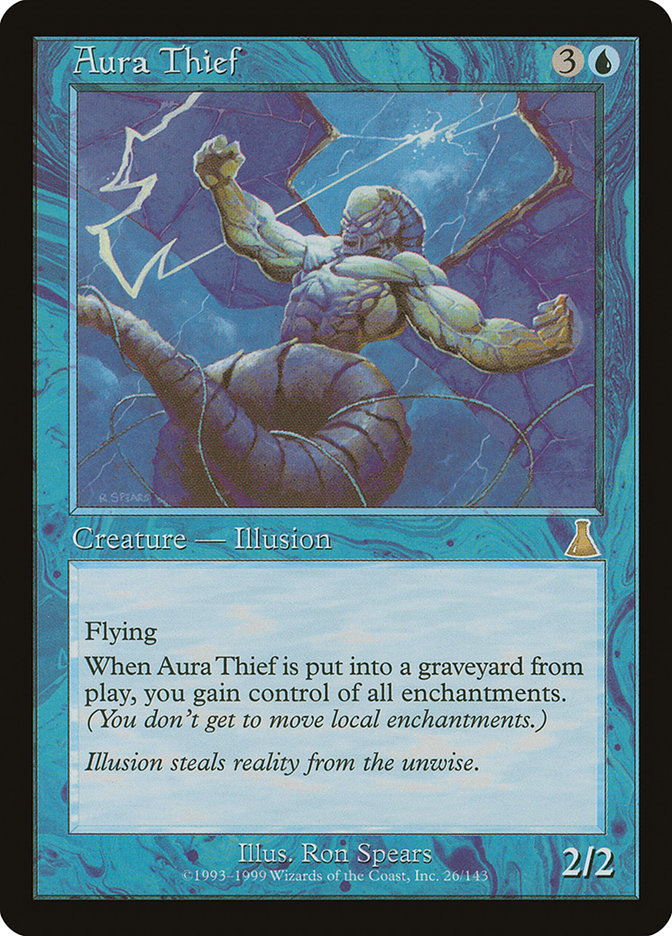Ladrão de Aura Carta MTG
| Expansões | Lançada em 2 expansõesVer todas |
| Custo de mana | |
| Custo convertido de mana | 4 |
| Raridade | Rara |
| Tipo | |
| Habilidades | Flying |
| Ataque | 2 |
| Defesa | 2 |
Onde comprar
Se você deseja comprar um cartão Ladrão de Aura MTG de um conjunto específico como Urza's Destiny and The List, há diversas opções confiáveis a serem consideradas. Uma das principais fontes é a loja de jogos local, onde muitas vezes você pode encontrar boosters, cartas individuais e decks pré-construídos de conjuntos atuais e de alguns conjuntos anteriores. Eles geralmente oferecem o benefício adicional de uma comunidade onde você pode negociar com outros jogadores.
Para um inventário mais amplo, especialmente de conjuntos mais antigos, mercados on-line como TCGPlayer, Card Kingdom e Card Market oferecem seleções extensas e permitem que você pesquise cartas de conjuntos específicos. Grandes plataformas de comércio eletrônico, como eBay e Amazon, também têm listagens de vários vendedores, o que pode ser um bom lugar para procurar produtos lacrados e achados raros.
Além disso, o site oficial do Magic geralmente tem um localizador de lojas e listas de varejistas para encontrar a Wizards of the Produtos licenciados pela Costa. Lembre-se de verificar a autenticidade e a condição dos cartões ao comprar, especialmente de vendedores individuais em mercados maiores.
Abaixo está uma lista de alguns sites de lojas onde você pode comprar os Ladrão de Aura e outras cartas MTG:
 COMPRAR
COMPRAR BurnMana é parceiro oficial da TCGPlayer
- eBay
- Card Kingdom
- Card Market
- Star City Games
- CoolStuffInc
- MTG Mint Card
- Hareruya
- Troll and Toad
- ABU Games
- Card Hoarder Magic Online
- MTGO Traders Magic Online
Veja produtos de MTG
Expansões
A carta Ladrão de Aura Magic the Gathering foi lançada em 2 expansões diferentes entre 1999-06-07 e 1999-06-07. Ilustrado por Ron Spears.
| # | Lançamento | Nome | Código | Símbolo | Número | Moldura | Layout | Borda | Artista |
|---|---|---|---|---|---|---|---|---|---|
| 1 | 1999-06-07 | Urza's Destiny | UDS | 26 | 1997 | Normal | Preta | Ron Spears | |
| 2 | The List | PLST | UDS-26 | 1997 | Normal | Preta | Ron Spears |
Legalidades
Magic the Gathering formats where Ladrão de Aura has restrictions
| Formato | Legalidade |
|---|---|
| Commander | Válida |
| Legacy | Válida |
| Oathbreaker | Válida |
| Premodern | Válida |
| Vintage | Válida |
| Duel | Válida |
| Predh | Válida |
Regras e informações
O guia de referência para regras de cartas de Magic: The Gathering Ladrão de Aura fornece decisões oficiais, quaisquer erratas emitidas, bem como um registro de todas as modificações funcionais que ocorreram.
| Data | Texto |
|---|---|
| 2004-10-04 | Gaining control of an enchantment often isn’t very interesting since it probably won’t change what the enchantment is doing. It only matters if the enchantment does something specifically to “you” or “an opponent” or if the enchantment has an activated ability (which only the controller can use). |

